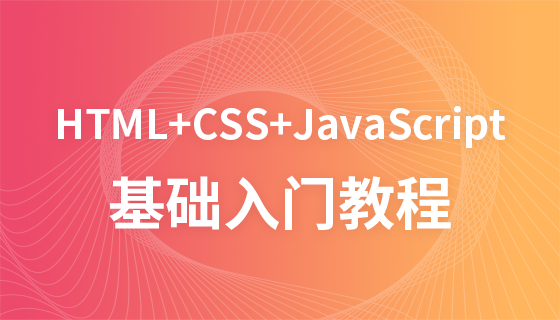
本文深入探讨go语言中处理泛型数据结构时常见的panic: interface conversion错误。通过分析链表pop()方法返回类型与interface{}的特性,详细解释了为何会触发该错误,并提供了正确的多级类型断言方法,以及安全类型断言("comma-ok")的最佳实践,帮助开发者构建健壮的go泛型代码。
在Go语言中,interface{}(空接口)是一种强大的机制,允许我们处理任意类型的数据,从而实现泛型数据结构,例如链表、栈或队列。然而,当从这些泛型结构中取出数据并尝试恢复其原始类型时,如果类型断言不正确,就可能遇到panic: interface conversion运行时错误。理解这一机制是编写可靠Go代码的关键。
interface{}可以持有任何类型的值。当一个变量被声明为interface{}类型时,它实际上存储了两部分信息:值的类型信息和值本身。
当我们需要从interface{}中提取出其底层具体类型的值时,就需要使用类型断言。类型断言的语法通常有两种形式:
让我们通过一个具体的链表实现案例来深入分析panic: interface conversion错误。假设我们有一个链表,其节点存储interface{}类型的值,并且我们尝试将Player结构体存入其中。
立即学习“go语言免费学习笔记(深入)”;
考虑以下简化的链表结构和Pop方法:
type Node struct {
value interface{}
next *Node
}
type LinkedList struct {
head *Node
length int
}
// Pop方法从链表头部移除并返回一个元素
func (A *LinkedList) Pop() interface{} {
if A.head != nil {
head_node := A.head // head_node 是 *Node 类型
A.head = A.head.GetNext()
A.length--
return head_node // Pop方法返回的是 *Node 类型
}
return nil
}当我们尝试从链表中取出元素并直接将其断言为*Player类型时,例如:
type Player struct {
name string
salary int
}
new_linked_list := NewLinkedList()
new_linked_list.Push(&Player{name: "A", salary: 999999})
// ... 更多Push操作
// 错误示范:直接断言为 *Player
// fmt.Printf("Removing %v\n", new_linked_list.Pop().(*Player).name)这段代码会导致panic: interface conversion: interface is *main.Node, not *main.Player。
错误根源分析:
简而言之,你试图将一个*Node类型的值断言成*Player类型,这在类型上是不兼容的。
要正确地访问存储在链表节点中的Player对象,我们需要进行多级类型断言:
正确的代码应该如下所示:
fmt.Printf("Removing %v\n", new_linked_list.Pop().(*Node).value.(*Player).name)这个表达式的解析步骤是:
为了避免运行时panic,尤其是在你不确定interface{}中实际存储的类型时,强烈建议使用安全类型断言。虽然在Pop循环中,我们通常知道预期类型,但在其他遍历或处理泛型数据结构的场景中,安全断言更为稳妥。
例如,在遍历链表时,我们可以使用安全断言来检查每个节点的值是否为*Player:
func (A *LinkedList) TraverseL(f func(interface{})) {
A.eachNode(func(input_node *Node) {
f(input_node.value)
})
}
// ... 在main函数中
new_linked_list.TraverseL(func(input_value interface{}) {
// 使用安全类型断言
if player, exist := input_value.(*Player); exist {
fmt.Printf("\t%v: %v\n", player.name, player.salary)
} else {
// 处理非Player类型的情况,例如打印错误或跳过
fmt.Printf("\tFound non-Player type: %T\n", input_value)
}
})以下是一个完整的、修正后的Go语言链表实现,包含了正确的类型断言和安全类型断言的示例:
package main
import "fmt"
// Node 结构体定义了链表中的一个节点
type Node struct {
value interface{} // 存储任意类型的值
next *Node // 指向下一个节点
}
// NewNode 创建并返回一个新的Node
func NewNode(input_value interface{}, input_next *Node) *Node {
return &Node{value: input_value, next: input_next}
}
// GetNext 返回当前节点的下一个节点
func (A *Node) GetNext() *Node {
if A == nil {
return nil
}
return A.next
}
// LinkedList 结构体定义了链表
type LinkedList struct {
head *Node // 链表头部节点
length int // 链表长度
}
// GetLength 返回链表的当前长度
func (A *LinkedList) GetLength() int {
return A.length
}
// NewLinkedList 创建并返回一个新的空链表
func NewLinkedList() *LinkedList {
return new(LinkedList)
}
// Push 将一个值添加到链表头部
func (A *LinkedList) Push(input_value interface{}) {
A.head = NewNode(input_value, A.head)
A.length++
}
// Pop 从链表头部移除并返回一个节点(*Node类型)
func (A *LinkedList) Pop() interface{} {
if A.head != nil {
head_node := A.head // head_node 是 *Node 类型
A.head = A.head.GetNext()
A.length--
return head_node // 返回的是 *Node
}
return nil
}
// eachNode 遍历链表中的每个节点并执行函数f
func (A *LinkedList) eachNode(f func(*Node)) {
for head_node := A.head; head_node != nil; head_node = head_node.GetNext() {
f(head_node)
}
}
// TraverseL 遍历链表中的每个值并执行函数f
func (A *LinkedList) TraverseL(f func(interface{})) {
A.eachNode(func(input_node *Node) {
f(input_node.value) // 传递节点内部存储的值
})
}
func main() {
// 定义Player结构体
type Player struct {
name string
salary int
}
new_linked_list := NewLinkedList()
// 向链表中Push Player对象
new_linked_list.Push(&Player{name: "A", salary: 999999})
new_linked_list.Push(&Player{name: "B", salary: 99999999})
new_linked_list.Push(&Player{name: "C", salary: 1452})
new_linked_list.Push(&Player{name: "D", salary: 312412})
new_linked_list.Push(&Player{name: "E", salary: 214324})
new_linked_list.Push(&Player{name: "EFFF", salary: 77528})
// 第一次Pop,返回的是 *Node 类型
fmt.Println(new_linked_list.Pop())
fmt.Println("--- Traversing LinkedList ---")
// 遍历链表,使用安全类型断言
new_linked_list.TraverseL(func(input_value interface{}) {
if player, exist := input_value.(*Player); exist { // 安全断言
fmt.Printf("\t%v: %v\n", player.name, player.salary)
} else {
fmt.Printf("\tFound non-Player type in list: %T\n", input_value)
}
})
fmt.Println("--- Finished Traversing ---")
l := new_linked_list.GetLength()
fmt.Println("--- Removing elements ---")
for i := 0; i < l; i++ {
// 正确的多级类型断言:
// 1. Pop() 返回 interface{} (底层是 *Node)
// 2. .(*Node) 断言为 *Node
// 3. .value 访问 Node 内部的 interface{} (底层是 *Player)
// 4. .(*Player) 断言为 *Player
// 5. .name 访问 Player 的 name 字段
fmt.Printf("Removing %v\n", new_linked_list.Pop().(*Node).value.(*Player).name)
}
fmt.Println("--- Finished Removing ---")
}输出示例:
&{0xc00000c0a0 0xc00000c080} // 第一次Pop返回的 *Node 内存地址
--- Traversing LinkedList ---
E: 214324
D: 312412
C: 1452
B: 99999999
A: 999999
--- Finished Traversing ---
--- Removing elements ---
Removing E
Removing D
Removing C
Removing B
Removing A
--- Finished Removing ---通过深入理解interface{}的工作原理和正确的类型断言方法,开发者可以更有效地在Go语言中构建和维护泛型数据结构,避免常见的运行时错误。
以上就是Go语言中泛型数据结构与接口转换的深入解析的详细内容,更多请关注php中文网其它相关文章!

每个人都需要一台速度更快、更稳定的 PC。随着时间的推移,垃圾文件、旧注册表数据和不必要的后台进程会占用资源并降低性能。幸运的是,许多工具可以让 Windows 保持平稳运行。




Copyright 2014-2025 https://www.php.cn/ All Rights Reserved | php.cn | 湘ICP备2023035733号